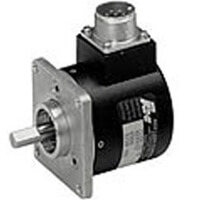PLC Controllers - Programmable Logic Controllers
From a single block "relay replacer" to a "multi-card," "multi-rack," plant automation panel, PLC's are here to stay, and they're getting the job done!



PLC's are described as Industrial Computers, and that's a pretty accurate analogy. But they differ from our PC or MacBook by the fact that the PLC has output terminals to which wires are connected to control the various loads. Our PC has the monitor screen and various USB or serial ports to which peripheral devices are connected.
But they are the same by having a CPU (Central Processing Unit) and RAM (Random Access Memory). So I guess that makes them a true computer.
With the economy of scale in their favor, the PLC has evolved to the point that the smaller units (4 or 8 inputs and outputs) have become so inexpensive that they truly are "relay replacers." For the cost of the PLC, you can replace 1 or more relays and do away with significant wiring headaches as well as making the solution more compact. There is the advantage of the CPU with its programmability so that you also eliminate wiring tying components together. It's a step in the right direction.
Some more complex systems require special features, like more memory, additional CPU processing power, special inputs for things like thermocouples, etc. That's when we step up to the "Rack Mounted" devices. Rack units have an individual power supply and expansion slots. These slots are used so you can "plugin" a memory card, or an I/O card, or special feature like a high-speed counter card, and many more.
And if you run out of space because you've got a large system to control, you add a "rack" or two. Connect them in a "daisy chain" type of connection, or today, use Ethernet cable and make a full-fledged network!
PLC's and their use don't seem to have an end. New features and components continue to be built for us to expand our control solutions.
Peripherals
Let's take a short side trip to some of the "specialty" items that may exist in a PLC (or other) control system.
Encoders, Pulse Generators, and Tachometer Generators
These items are used when we want to count something, need to position it precisely, or want to know the exact location of some piece of equipment.



Encoders
Encoders are a device that translates rotary shaft angular position or motion to an analog or digital signal. There are various designs, but one prevalent type is the "optical" encoder. This design uses a light source directed upon a "photodiode." When it senses light (or doesn't sense it), the photodiode emits a signal to some control device, and action begins. An optical "mouse" or "trackball" device uses this type of design. One drawback of the optical devices is it's sensitivity to dust and dirt on the light source or target. Check this extensive article on Wikipedia.org to read more about these devices.
Pulse Generators
Pulse Generators are an encoder, of sorts, but rather than sending an "analog" or "digital" signal as an even voltage, the signal will show up as individual pulses. These pulses will be of a specific width and height that a controller will interpret into the desired output.
Tachometer Generators
Finally, the Tach Generator. A tachometer generator looks a lot like a miniature motor. One of the oldest and one that is still in use today is the GE "5BC" tach generator. A tach generator is attached to the rotating shaft of some device that we wish to monitor; say an electric motor. The tach generator produces a precise voltage. One popular output voltage is 100 volts per 1000 RPM. So if the output voltage is 65.8 volts, then we know the motor is turning at 658 RPM. The signal from a tach generator solves numerous control issues, but one that has existed for eternity is a "feedback" signal for a DC drive system. Using the voltage from the tach generator as a feedback voltage allows us to control the speed of the main motor precisely. If the load increases and the motor slows down, the feedback voltage drops. When it does, the control of the main motor receives the different feedback voltage and adjusts the control voltage of the main motor to bring it back to proper speed. It works great, and it's been working that way for ages.






 Back to Top
Back to Top




